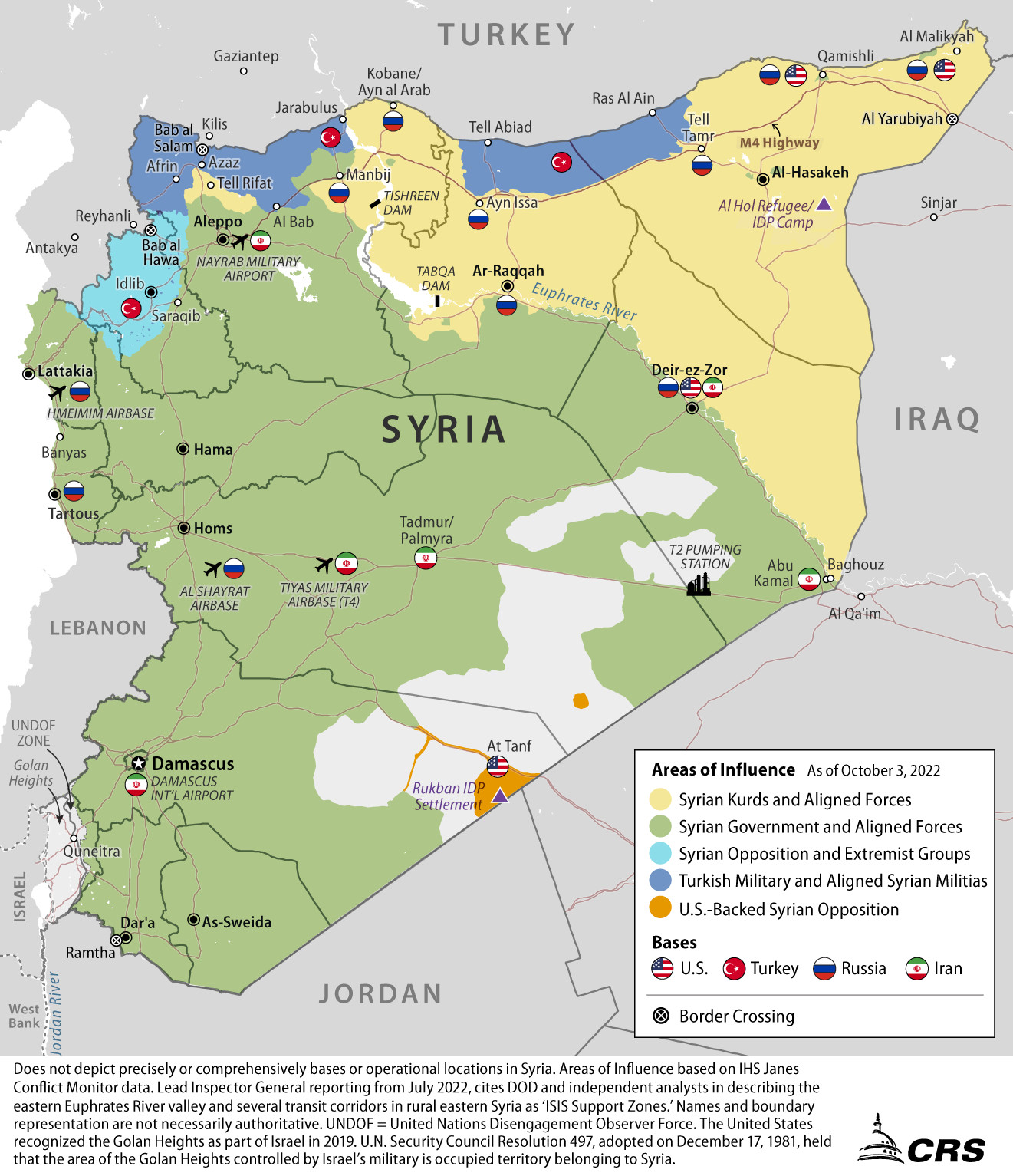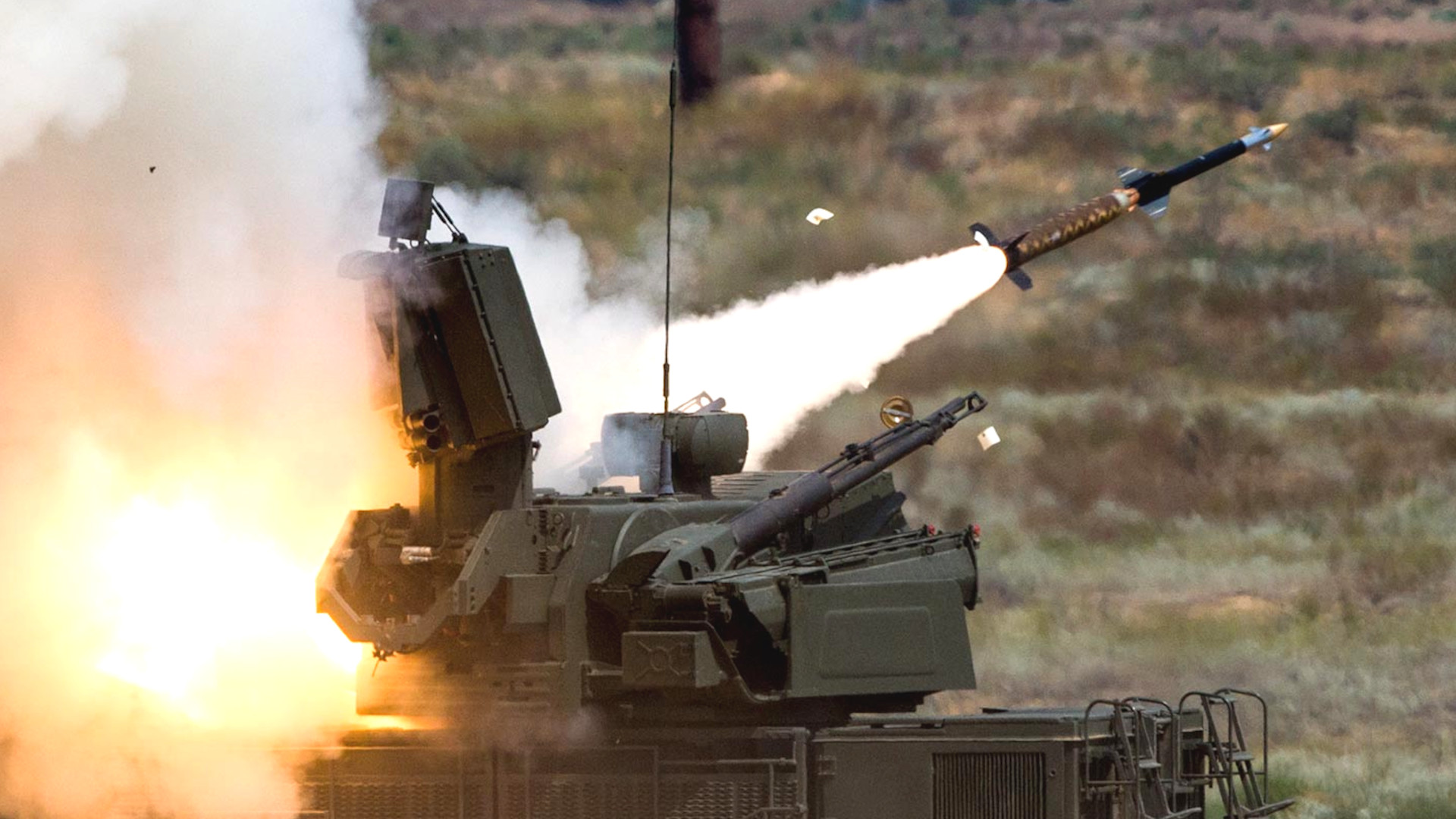Last November, Russian forces operating a Pantsir-S1 air defense system fired on a U.S. MQ-9 Reaper drone flying over eastern Syria, but did not succeed in shooting it down, U.S. Central Command has confirmed. That the incident had occurred at all only emerged recently in one of a number of leaked U.S. military documents. This comes as senior U.S. commanders have been publicly discussing what they say is an uptick in worryingly aggressive Russian behavior in Syria and elsewhere in the world in recent months.
The Washington Post was the first to report on the fact that one of the documents leaked online by Airman 1st Class Jack Douglas Teixeira of the Massachusetts Air National Guard mentioned a Pantsir-S1, also known by its NATO reporting name SA-22 Greyhound, firing on a U.S. Reaper operating in Syria on November 27, 2022. That outlet said an unnamed U.S. official had confirmed the incident and that the missile the Pantsir-S1 had fired had missed the drone.

“We can confirm that a Russian-controlled SA-22 fired a missile at a US MQ-9 on November 27th, 2022,” U.S. Army Col. Joe Buccino, a spokesperson for U.S. Central Command (CENTCOM), the top U.S. military command in the region, told The War Zone in a statement today.
The Pantsir-S1 is a truck-mounted road-mobile air defense system armed with command-guided surface-to-air missiles and a pair of twin-barrel 30mm automatic cannons. It can use either its onboard radar and/or long-range infrared sensor to spot and track various threats. The system is primarily intended for lower-altitude point defense and is capable of engaging fixed-wing aircraft, helicopters, drones, cruise missiles, and other munitions, including reportedly artillery rockets.

Russian and Syrian forces have had these systems deployed at various locations in Syria for years now. Their track record of successfully engaging various threats in that country has been, at best, mixed.
Details about the exact circumstances of the incident last November remain limited. We don’t know at this time whether Russian forces deliberately attacked the MQ-9 drone or knew conclusively that it was an American aircraft rather than a drone flown by any of a number of groups operating in Syria. There is always the potential that some kind of mistake may have occurred, though that would be concerning in its own way.
The leaked document says that the Pantsir-S1 that launched its missile was situated at Qamishili Airfield, also known as Qamlishi Airport, in northeastern Syria. Russia’s military has been actively operating from Qamishili for years now and the area around the town itself has seen dangerous interactions between Russian and U.S. forces on the ground on multiple occasions in the past.
Though U.S.-backed predominantly Kurdish forces control much of northeastern Syria, Russian forces operate from a number of outposts in that part of the country. This, combined with the presence of Turkish military units and Turkish-backed groups, has long made the overall security situation in the region complex.

“After the incident, CENTCOM officials contacted the Russian deconfliction center about the matter,” Col. Buccino told The War Zone. Formal deconfliction arrangements have existed between the U.S. and Russian militaries in Syria for years now, but Russia’s forces have been repeatedly accused of violating their terms.
When asked if what happened last November was the first time that Russian forces had fired on a U.S. Reaper over Syria, Col. Buccino said simply that “incidents of this nature are not routine.”
What other actions the U.S. military may have taken in response to the incident are unknown. This is not the first time American drones have been attacked or otherwise harassed by forces with which the United States is not in active overt conflict with, however. In 2019, Iran’s Islamic Revolutionary Guard Corps shot down a U.S. Navy RQ-4 Broad Area Maritime Surveillance Demonstrator (BAMS-D) flying in international airspace over the Strait of Hormuz.
Rogue general Khalifa Haftar’s Libyan National Army (LNA), which has received support from Russia, among others, or forces aligned with it, has been responsible for bringing down at least two U.S. Air Force MQ-9s operating over parts of that country in the past four years. The U.S. government has directly accused the Russian private military company Wagner, which has strong links to Russian intelligence services and that country’s military, of shooting down one of these Reapers in 2019.
There have multiple other instances of varying degrees of harassment of U.S. drones, as well. This includes an incident just last month over the Black Sea, in which Russian Su-27 Flanker fighter jets made multiple close passes by a U.S. Air Force Reaper and dumped fuel on it. One of the jets eventually collided with the drone, causing it to crash.

Attacking or otherwise engaging in unsafe behavior around drones inherently presents the aggressor with much lower risks of escalation since there is no danger of killing foreign military personnel.
Still, the U.S. military has responded to some of these incidents in the past by tasking crewed fighter jets, including F-22 Raptor stealth fighters, to provide escorts. The Air Force has also demonstrated the ability of the MQ-9 to carry and employ the AIM-9X Sidewinder air-to-air missile, and these drones could be armed with these missiles for self-defense against other aircraft. U.S. Reapers can already carry various ordnance capable of engaging threats on the ground.
Regardless of the specifics of the November 2022 incident, that now-confirmed Russian attack on the U.S. MQ-9 over Syria seems to align with broader concerning trends both in that region and elsewhere. This goes well beyond the aforementioned loss of the Reaper over the Black Sea in March.
Just this week, U.S. Air Forces Central (AFCENT) released two declassified videos, one of which is seen below, that it says are evidence of an increase in worrying encounters with Russian aircraft over Syria in recent months. Both clips show fully-armed Russian Su-35 Flanker-Es as filmed by U.S. combat jets in the region.

“Armed Russian fighter aircraft” have directly flown over U.S.-led coalition forces in Syria at least 26 times between March 1 to April 19 of this year, according to accompanying data AFCENT released on Wednesday. The command added that there had been 63 violations since March of deconfliction protocols between U.S. and Russian forces that were put into place just in 2019.
“Over the course of my career I have not seen this kind of disregard for agreed upon protocols and deconfliction rules,” AFECNT commander Lt. Gen. Alexus Grynkewich said in a statement. “It’s concerning because it increases the risk of miscalculation, and given incidents like the MQ-9 intercept and subsequent downing over the Black Sea, it’s not the kind of behavior I’d expect out of a professional Air Force.”
“What we are seeing… is an increase recently in the unprofessional and unsafe behavior of the Russian air force in the region,” U.S. Army Gen. Michael “Erik” Kurilla, head of CENTCOM, had told members of Congress on March 16 at a hearing. “It’s not new, but we have seen a significant spike since about 1 March in Syria.”
Russia’s relations with the United States and a host of other Western countries have, of course, chilled since the start of its all-out invasion of Ukraine in February 2022. There have been concerns for months now about the potential for that conflict to have spillover effects elsewhere in Europe and parts of the rest of the world, including in Syria. Those fears increasingly look to have been borne out, at least to some degree.
It is also worth noting that the November 2022 incident isn’t the only very serious altercation between Russian and Western military forces to have emerged from the Teixeira leaks. Another document from that cache, together with secondary reporting, revealed that an incident involving Russian flankers and a British RC-135W Rivet Joint spy plane over the Black Sea in September 2022 might have ended in a shootdown had it not been for an apparently malfunctioning air-to-air missile.
The confirmation that a U.S. MQ-9 Reaper flying over Syria could have been shot down last November only adds new evidence of the larger concerning trends in aggressive Russian behavior.
Contact the author: joe@thedrive.com

